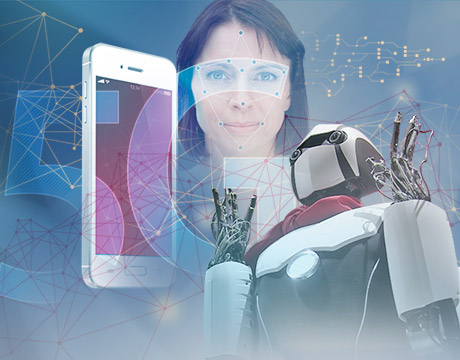10 Emerging Technologies in Engineering, Part 1
10 Emerging Technologies in Engineering, Part 1


Ingenuity and vision are the hallmarks of great engineering. Envisioning the machines of tomorrow is especially important, and some technologies – visible and invisible – could change the way we design and make products.
New communication technologies will link up machines much like cellular technologies interconnecting humans. These technologies could make it common for hospitals to monitor patients as soon as they are in an ambulance, or for factories to be alerted to hazardous conditions by remote industrial control rooms.
One of these critical technologies is 5G, which had a coming out party at the recent Mobile World Congress (MWC) trade show held in Barcelona. The show is largely a showcase for the newest mobile handsets, but the latest Internet of Things technologies also took the spotlight. We explore the ten top trends from the show.
1) Goodbye, 4G. 5G is the faster successor to 4G, and it is coming soon. By the end of 2018, AT&T will launch its 5G network for mobile devices, and soon after, it will be in machines, cars, IoT devices, drones, and infrastructure equipment. Simply explained, 5G will allow machines to make long-distance data calls to other mechanical and electrical devices at speeds faster than today’s home internet connections. 5G modems were shown by Intel, Qualcomm, and Sierra Wireless, while Ericsson talked about 5G technologies for IoT devices and machines. Ubimetro boasted about a 5G connected street lamp, while Germany’s Fraunhofer Institute demonstrated a 5G security camera with superfast connection to a computer so it could instantly recognize a face.
Also for You: The Emerging Technology Award in Manufacturing.
2) Blockchain. Many think blockchain is the same as bitcoin, but it isn’t. Blockchain is the underlying technology that makes bitcoin possible, and it can be adapted to manufacturing. Companies like Cisco and Nokia are exploring ways to log timestamped data sent from sensors on a digital ledger – which is at the center of blockchain – and instantly verifying it as being genuine. A deeper audit trail on a blockchain could help in the effective management of sensors and machines.
3) 5G Robot. NTT DoCoMo of Japan demonstrated a 5G humanoid robot “that uses 5G to mirror the operator's movements in real time and perform tasks remotely.” The idea was to demonstrate the speed of 5G and how it can mimic human movement almost instantly. NTT also expects to put 5G IoT devices all over 2020 Olympics in Tokyo, so if you plan to be there, watch out.
4) Augmented Identity. The concept of "augmented identity" is key to preventing future car theft. IDEMIA, a French company, wants to bring facial recognition for the authorized use of cars. Enroll your face with a system, and a car will unlock only if it recognizes your face. The technology uses sensors, location tracking, and software. IDEMIA has a larger goal of enabling a more secure shared driving culture.
For the rest of the list,read on in Part 2.



